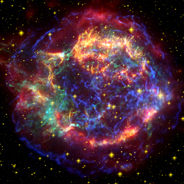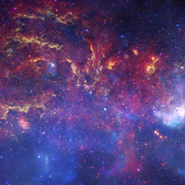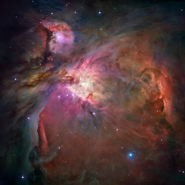Did You Know: How Images Are Made
Video Player
Video Versions
Did you know telescope data undergo various steps to result in the colorful images we’re familiar with?
Learn more about how images are made:
Learn more about how images are made:
Produced by the Space Telescope Science Institute’s Office of Public Outreach in collaboration with NASA’s Universe of Learning partners: Caltech/IPAC, Center for Astrophysics | Harvard & Smithsonian, and NASA Jet Propulsion Laboratory.
Video imagery:
- Image of initial telescope image of galaxy M74
- Black and white image of galaxy M74
- Collage of different artifacts: STScI
- Animation of black and white telescope data being translated into visible colors: STScI
- Webb filters: f2100w, f1130w, f1000w, f770w
- Hubble filters: R814w, f658n, f555w, f435w
- Chandra filter: 0.5-8keV
- Full-color image of galaxy M74: X-ray: NASA/CXC/SAO; Optical: NASA/ESA/STScI; IR NASA/ESA/CSA/STScI, J. Lee and the PHANGS-JWST Team
Music from Music for Non-Profits
(SPEECH)
[ETHEREAL MUSIC]
(DESCRIPTION)
Text, Did you know? How images are made.
Initial telescope image of galaxy M74 from the Hubble Space Telescope.
Telescope data undergo various steps to result in the colorful images we're familiar with. This telescope image appears dull to our eyes ... But it actually holds a dazzling number of details waiting to be uncovered through a collaborative process involving scientists and imaging specialists.
A faint white spiral galaxy with some brighter stars against a black background.
Text, Imaging specialists follow a meticulous process, beginning with adjusting and balancing the brightness to bring out even the faintest details.
The galaxy in grey scale with detail that fills the screen.
Text, Artifacts, undesired features introduced by the detector or not part of the observed scene, are then removed.
These can include star centers that appear black, cosmic rays, and detector noise within the image's background.
Three images illustrate the named artifacts.
The black and white telescope data at different wavelengths are then translated into visible colors -- following scientific and photographic principles along the way.
Images from Webb (infrared), Hubble (visible) and Chandra (X-ray).
By merging the telescope's images captured through various filters of the same target, a full-color version emerges. Images from different telescopes can be layered to create an even more detailed scene.
A colored spiral. Multi-wavelength Image.
Who knows what discoveries and wonders we'll uncover next? Only time, and analyzing telescope data, will tell.


